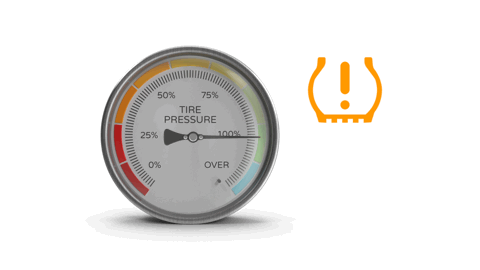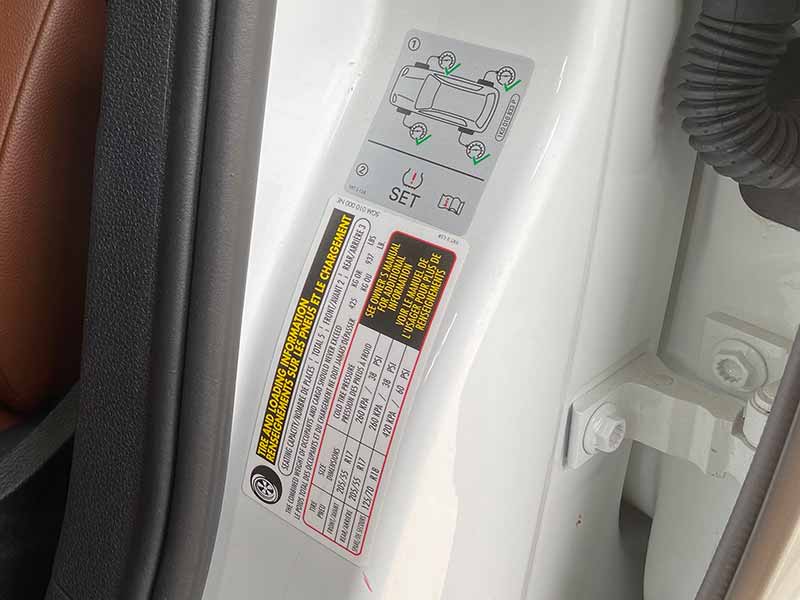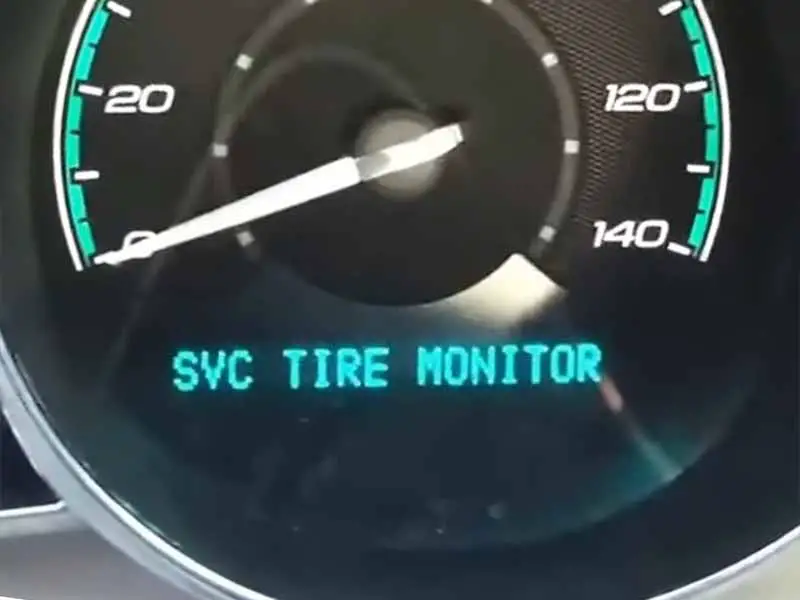Imagine you’re cruising down the highway when suddenly, a strange alert appears on your dashboard: “SVC Tire Monitor System.” What does it mean, and how urgent is it? If you’re driving a General Motors vehicle, understanding this alert is crucial for your safety and the optimal performance of your vehicle.
What Does “SVC Tire Monitor” mean?
The “SVC Tire Monitor” alert is a warning signal that appears on the dashboard of General Motors vehicles that is meant to inform you of the need to service your tire pressure monitor system. It typically indicates a malfunction with the TPMS, commonly due to a dead battery in one or more tire pressure sensors.
In this article, we’ll explore the meaning of the “SVC Tire Monitor” alert, where the tire monitor is located, and the safety implications of driving with this alert active. Additionally, we’ll provide a step-by-step guide to fixing and resetting the alert, along with tips for maintaining your tire pressure monitoring system to ensure overall tire health and safety.
Let’s take a closer look.

What Does the SVC or Service Tire Monitor System Mean?
The Service Tire Monitor alert is an indication displayed on the dashboard of General Motors vehicles, such as Chevrolets. It signifies an issue within the tire pressure monitoring system that requires attention.
Common Reasons for the Alert
This alert may manifest for various reasons, including:
- Dead Battery in the Sensors: Each tire pressure sensor is equipped with a battery. If one or more batteries become depleted, the system cannot gauge tire pressure accurately.
- Malfunction in the System: A sensor might become faulty, or there may be a complication with the wiring or connections within the system.
- Inaccurate Tire Pressure: If the tire pressure in one or more tires is incorrect, the system may trigger this alert.
Details Behind the Alert
Here’s a more detailed look at the issues that can lead to this alert:
- Dead Sensor Battery: Tire pressure sensors rely on batteries to function. When these batteries expire, the sensor cannot transmit information, leading to the “Service Tire Monitor System” alert.
- Other Sensor Problems: Beyond the battery, sensors can suffer from various malfunctions, such as physical damage or operational failures.
- Communication Issues: If the wireless connect between the sensors and the tire monitor system computer is faulty, the alert may be triggered.

Is It Safe to Drive with the “SVC Tire Monitor” Alert?
While the “Service Tire Monitor” alert might not necessarily mean immediate danger, it’s a warning that should not be overlooked. Here’s why:
- Immediate Risk is Generally Low: Typically, the alert doesn’t mean that the tires are about to fail. It might be triggered by a minor issue like a dead sensor battery. Driving with the alert active for a short distance is usually not hazardous.
- Potential for Escalation: If the alert is due to an actual tire pressure issue, and it’s left unaddressed, the risk can escalate. Improper tire pressure can affect handling, fuel efficiency, and overall tire lifespan.
Importance of Addressing the Alert Promptly
Ignoring the alert can lead to potential risks. Here’s why it’s vital to address it in a timely manner:
- Understanding the Root Cause: The alert may be a sign of underlying issues that require immediate attention, such as a significant drop in tire pressure. Addressing it promptly ensures that these issues are identified and corrected.
- Preventing Damage: If there’s a genuine problem with the tire pressure or the monitoring system, continuous driving without resolving the issue might lead to damage. It may cause uneven tire wear or other mechanical problems.
- Maintaining Vehicle Safety: The tire pressure monitoring system is in place to ensure that the tires are operating within the safe pressure range. Ignoring the alert compromises this safety feature.
Potential Risks if Ignored
Here’s a closer look at what might happen if the alert is disregarded:
- Flat Tire: If you suffer a puncture and have rapid air loss or low tire pressure, you may not be aware of the problem before it’s too late to prevent an accident or tire damage that can’t be patched.
- Decreased Handling: Incorrect tire pressure may lead to decreased handling and responsiveness, particularly in emergency situations.
- Reduced Fuel Efficiency: Tire pressure affects fuel efficiency. Ignoring the alert might mean operating the vehicle with inefficient tire pressure, leading to increased fuel consumption.
- Premature Tire Wear: Continuous driving with incorrect tire pressure can cause the tires to wear unevenly and prematurely, leading to increased costs and potential safety issues down the line.

How to Fix the “SVC Tire Monitor” Alert
The “Service Tire Monitor System” alert can be triggered by various issues. Here’s how to identify some common problems:
- Check the Tire Pressure: Sometimes, the alert is simply due to low or high tire pressure. You can check the pressure using a tire pressure gauge.
- Inspect TPMS Sensors: The TPMS sensors within the wheels could have dead batteries or be damaged. This often requires specialized tools to diagnose.
- Look for Warning Lights: Other warning lights on the dashboard may accompany the alert, providing more information about the issue.
Step-by-Step Guide to Fixing Issues
Depending on the problem, you may be able to fix the issue yourself or may need professional assistance. Here’s a guide:
If It’s a Tire Pressure Issue:
- Adjust the Air Pressure: If the tire pressure is outside the recommended range, inflate or deflate the tires to the proper level.
- Reset the TPMS: In some vehicles, you may need to reset the TPMS after adjusting the tire pressure. Refer to the vehicle’s manual for instructions.
If It’s a Sensor Battery Issue:
- Identify the Affected Sensor: Specialized TPMS tools can identify which sensor has a dead battery. This often requires a visit to a professional service center.
- Replace the Sensor: Replacing TPMS sensors with dead batteries is necessary since they are embedded within the sealed TPMS sensor housing to protect them from moisture.
When to Seek Professional Assistance
- Complex TPMS Issues: If the problem is related to the TPMS sensors, control module, or other complex components, it may be best to seek professional assistance.
- Persistent Warning Light: If the alert continues after checking and adjusting the tire pressure, it’s advisable to consult a professional technician.
How to Reset the “Service Tire Monitor System” Alert
Resetting the “Service Tire Monitor System” alert might be necessary once you’ve identified and fixed the underlying issue that triggered the alert. This process can vary depending on the make and model of the vehicle, so it’s crucial to follow the specific instructions for your vehicle. Here’s a general guide:
Resetting the Tire Monitoring System
1. Refer to the Owner’s Manual
- Find the Specific Procedure: The owner’s manual for your vehicle should provide detailed instructions on how to reset the alert.
- Follow the Steps Carefully: Adhering to the exact steps in the manual ensures that you won’t inadvertently cause other issues.
2. Common Reset Procedures
Though the process may differ across various models, here’s a general idea of what it might involve:
- Turn the Ignition On: Usually, without starting the engine.
- Access the TPMS Reset Option: This could be through a button on the dashboard or through the vehicle’s infotainment system.
- Follow the Prompts: The system may guide you through the reset process, such as driving the vehicle for a certain distance or time.
- Inspect the Warning Light: Confirm that the “Service Tire Monitor System” alert is cleared.
Emphasis on Following Proper Procedures and Safety Guidelines
- Strict Adherence to the Manual: Ensure that you follow the procedure outlined in the vehicle’s manual, as incorrect procedures can lead to further complications.
- Avoid DIY If Unsure: If you’re uncertain about the procedure, it’s best to consult a professional. Improper handling might lead to unnecessary damage or voiding the vehicle’s warranty.
Professional Services That May Be Required for Complex Resets
Sometimes, the reset process is more complicated and requires professional tools or expertise:
- Specialized TPMS Tools: Some vehicles may need specialized tools to reset the TPMS, available at professional service centers.
- Complex Issues: If the alert doesn’t clear after following the manual’s instructions, it could indicate a more complex underlying problem that requires professional diagnosis and repair.

Tips for Maintaining Your Tire Pressure Monitoring System
Your Tire Pressure Monitoring System plays a vital role in keeping your vehicle safe on the road. Maintaining it in optimal condition is essential for preserving tire health and safety. Here’s a guide to routine checks and best practices:
Routine Checks
Consistent and regular inspections can prevent unexpected issues. Here’s what you can do:
1. Regularly Check Tire Pressure
- Use a Tire Pressure Gauge: Check the tire pressure with a reliable gauge at least once a month.
- Follow Manufacturer’s Guidelines: Refer to your vehicle’s manual for the recommended tire pressure.
2. Inspect the TPMS Sensors
- Look for Physical Damage: Check the sensors during tire rotation or any other maintenance service.
- Monitor Battery Life: Be aware of the average battery life of the sensors. Most last around 5-10 years, depending on use.
3. Monitor Warning Lights
- Observe Dashboard Indicators: If the TPMS light comes on, it’s an immediate sign to check your tires and the system itself.
Best Practices for Keeping the Tire Monitor System in Optimal Condition
1. Use Quality Equipment
- Invest in a Good Pressure Gauge: A reliable gauge ensures accurate readings.
- Use Proper Inflation Equipment: Using proper tools for inflation avoids damage to the sensors.
2. Follow Professional Recommendations
- Adhere to Service Schedules: Regular professional check-ups as part of routine maintenance helps in early detection of problems.
- Seek Professional Guidance If Needed: If you detect any issues with the TPMS, consult a technician.
Connection to Overall Tire Health
- Avoidance of Flat Tires: Regular checks can detect a slow leak that might lead to a flat tire.
- Maintaining Proper Tire Pressure: Keeping the correct tire pressure ensures optimal tire performance, prolongs tire life, and contributes to overall vehicle safety.
- Enhanced Fuel Efficiency: Properly maintained tire pressure can improve fuel efficiency.
Resources
Below are some links you may find helpful when learning about tires
- How do you fix the service tire monitor system? – J.D. Power
- Service tire monitor system meaning – Auto Zone
Final Thoughts
The “SVC Tire Monitor” alert in General Motors vehicles is more than just a simple warning; it’s an essential signal that something may be amiss with your tire pressure monitoring system. From understanding what this alert means to knowing where the tire monitor is located, the safety of driving with this alert, and how to fix and reset it, we’ve covered all the essential aspects. Regular maintenance and adherence to professional guidelines are vital to ensuring that this system functions effectively, contributing to overall tire health and vehicle safety.
Good luck and happy motoring.





